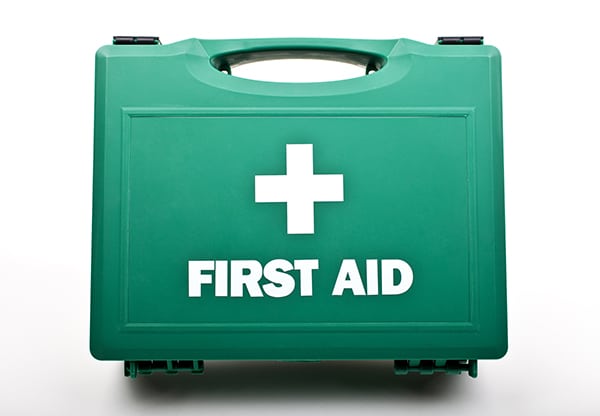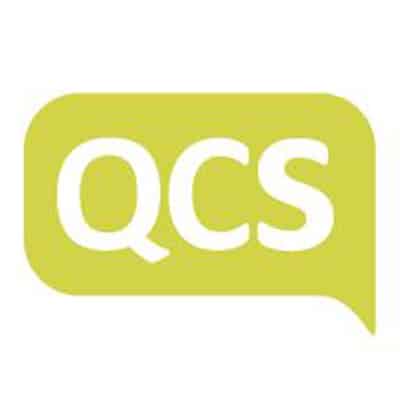Introduction
From time to time accidents occur in the workplace regardless of environment. First Aid, as the name suggests, is that first point of contact, the first person to aid the injured party. The key objective is to preserve life. Accidents can be minor, i.e. a cut, or something more serious like a heart attack or a significant fall. A First Aider will be the vital link person until emergency services arrive at which point the first aider can allow the emergency team of highly skilled professionals to take over.
What Type Of Provision Do I Need To Provide?
The health and social care industry can be complex and needs a higher presence than a low-risk office environment. The HSE offers guidance (INDG 214) as to first aid provision: http://www.hse.gov.uk/pubns/indg214.pdf
In general, all care homes should have at least one first aider per shift on site at all times; thus, generally during, the day this could be the office administrator as they are not likely to leave the building. Mobile staff i.e. Health Care Assistants (HCAs) escorting residents off-site will generally have a basic emergency first aid training.
The HSE has offered some guidance through the following case study scenario: http://www.hse.gov.uk/pubns/casestudy9.pdf (pages 5 and 6) relate to nursing homes and general offices.
What Type of First Aid Box Do I Need?
First aid boxes just have essential supplies only. They don’t have medication in! There is HSE guidance on the type you need but no mandatory requirement as to its contents. There is a BS 5899 standard, though your first aid needs assessment will determine what type you need based on the size of the care home, office etc and the type of activities you cover. A suggested minimum list could consist off the following:
- A leaflet giving general guidance on first aid (for example, HSE’s leaflet (INDG 347) Basic advice on first aid at work
- Individually wrapped sterile plasters (assorted sizes), appropriate to the type of work (hypoallergenic plasters can be provided if necessary)
- Kitchens will need waterproof plasters and are often blue in colour
- Sterile eye pads
- Individually wrapped triangular bandages, preferably sterile
- Safety pins
- Large sterile individually wrapped unmedicated wound dressings
- Medium-sized sterile individually wrapped unmedicated wound dressings
- Disposable gloves (for advice on latex gloves please see Selecting latex gloves
More information can be found in HSE guidance at: http://www.hse.gov.uk/firstaid/faqs.htm#first-aid-box
The contents of the first aid boxes should be checked periodically for stock levels. The boxes should be in prominent places ie: main office reception, kitchens, nurse treatment rooms etc.
What Is a First Aid Needs Assessment?
Having a First Aid Needs Assessment in place helps employers to assess what first aid provision is needed based on the work environment and complexity of the business. Some of the things which should be considered are:
- The nature of the work you do ie: people with acute care support needs
- Workplace hazards and risks (including specific hazards requiring special arrangements)
- The nature and size of your workforce
- The work patterns of your staff (day and night shifts)
- Holiday and other absences of those who will be first-aiders and appointed persons (ie: training sessions)
- Your organisation’s history of accidents (the accident book, near miss recording, hazard spotting)
A First Aid Needs Assessment is for each site within the organisation and will also have some other basic information such as:
- Date of the assessment and review date
- Name of the assessor
- Name of the place being assessed, address, contact number etc.
- Nearest hospital, GP surgery – address, distance, mode of transport and duration of journey
- Named first-aiders, the number that need to be on site, their training and whether it’s current
- Location of the PEEPs – generally a copy of this is attached to the assessment
- Nearest place of safety ie: local church hall etc in an emergency – this will be in your fire risk assessment
Why Do I Need First Aiders?
It is a legal requirement to have first aid provision in all workplaces under The Health and Safety (First Aid) Regulations 1981. Section 3 (1) of the regulations states that:
“An employer shall provide, or ensure that there are provided, such equipment and facilities as are adequate and appropriate in the circumstances for enabling first aid to be rendered to his employees if they are injured or become ill at work.”
Do I Need Training?
Yes, there is a need to have first aiders trained and a number of courses are available. However, there are two standard type courses:
- Emergency First aid at Work (1-day course)
- Appointed Person (3 or 4-day course)
Under the Health and Safety (First Aid) Regulations 1981 section 3 (2) it states the following:
“Subject to paragraphs (3) and (4), an employer shall provide, or ensure that there is provided, such number of suitable persons as is adequate and appropriate in the circumstances for rendering first aid to his employees if they are injured or become ill at work; and for this purpose, a person shall not be suitable unless he has undergone —
(a)such training and has such qualification as the Health and Safety Executive may approve for the time being in respect of that case or class of case, and
(b)such additional training, if any, as may be appropriate in the circumstances of that case.”
The HSE no longer endorses first aid courses as of 1 October 2013 and information can be found at: http://www.hse.gov.uk/firstaid/changes-first-aid-regulations.htm
In Northern Ireland, The Health and Safety (First-Aid) (Amendment) Regulations (Northern Ireland) 2017 came into law on 31st October 2017 which, in essence, covers similar to the UK changes.
Any certificates that have been issued by the HSENI to a first aid provider will no longer be valid after midnight on the 30 October 2017. The Approved Code of Practice has been withdrawn and guidance will be released in line with the HSE.
Summary
All managers must ensure they have first aid provision in their care homes and offices to comply with the law. First aiders must be trained in these duties and have training every three years to keep their practice current. Managers must ensure that there is adequate first aid provision and first aid box supplies for each shift and allow for holidays, sickness and training cover.
References
First Aid at Work (HSE) INDG214: http://www.hse.gov.uk/pubns/indg214.pdf
Guidance on needs assessment – case study (pages 5 & 6): http://www.hse.gov.uk/pubns/casestudy9.pdf
HSE INDG347 Basic advice on first aid at work
FAQs of first aid from HSE: http://www.hse.gov.uk/firstaid/faqs.htm#first-aid-box
First Aid Regulatory change takes place from HSE: http://www.hse.gov.uk/firstaid/changes-first-aid-regulations.htm
Legislation NI: The Health and Safety (First-Aid) (Amendment) Regulations (Northern Ireland) 2017
UK Legislation: Health and Safety (First Aid) Regulations 1981 section 3 (2)





